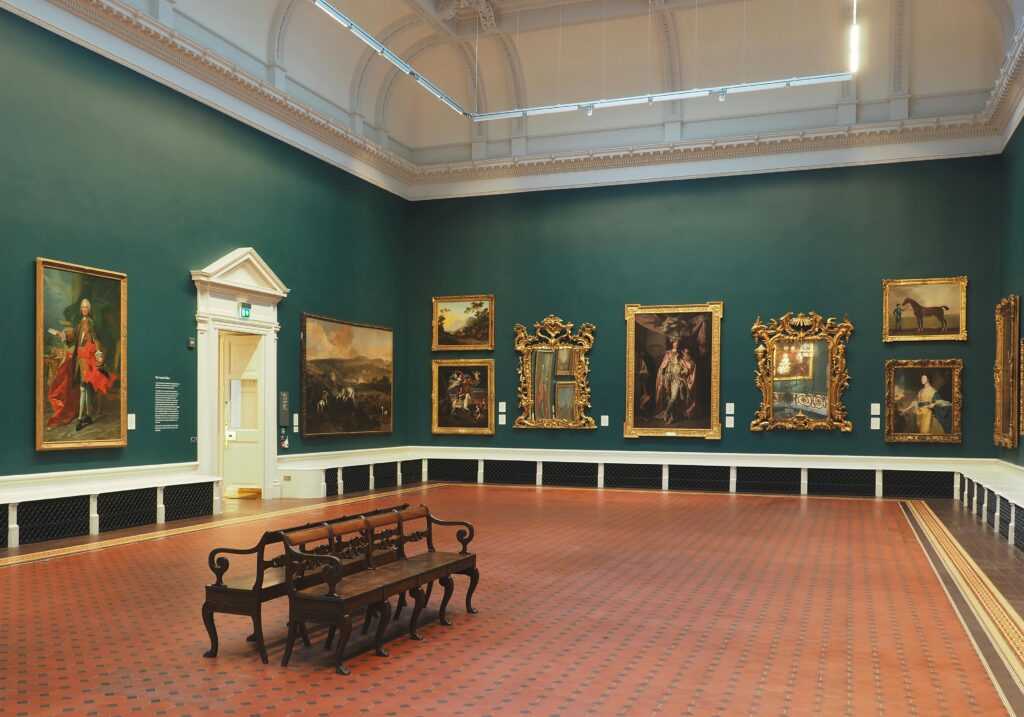As an art enthusiast, I’ve always been captivated by the remarkable talent and creativity of female artists throughout history. From Frida Kahlo’s vibrant self-portraits to Georgia O’Keeffe’s iconic floral paintings, women have made indelible marks on the art world. In this article, we delve into the inspiring journey of women in art, celebrating their invaluable contributions and exploring the diverse range of styles and themes they have brought to the forefront.
I’ll take you on a journey through time, highlighting the groundbreaking works of pioneering female artists who defied societal norms and paved the way for future generations. From the Renaissance period to contemporary art, women have challenged conventions, shattered glass ceilings, and left a lasting legacy that continues to inspire and resonate with audiences worldwide. Join me as we shine a spotlight on the extraordinary talent and resilience of women in art, honoring their creativity and vision that have enriched our cultural heritage.
Historical Overview of Women in Art
I’m thrilled to delve into the historical overview of women in art, showcasing their remarkable journey through the ages and their significant contributions to the artistic landscape.
Early Contributions
In the early days of art history, women faced numerous challenges in gaining recognition for their artistic endeavors. Despite societal constraints, some women managed to make a mark in the art world. For instance, Artemisia Gentileschi, a Baroque painter in the 17th century, defied conventions to become one of the most renowned artists of her time. Her powerful and emotive paintings challenged the male-dominated art scene, paving the way for future generations of female artists to break barriers and express themselves freely.
20th Century Breakthroughs
The 20th century marked a significant period for women in art, with many groundbreaking artists emerging and reshaping the artistic landscape. Figures like Frida Kahlo, known for her bold self-portraits exploring identity, pain, and femininity, challenged traditional norms and brought attention to women’s struggles and triumphs. Additionally, Georgia O’Keeffe’s innovative approach to abstract art revolutionized the way people perceived the natural world through her iconic flower paintings. These artists, among many others, not only shattered stereotypes but also paved the way for a more inclusive and diverse art world, where women’s voices were heard and celebrated.
Key Female Figures in Art History
Exploring the realm of art history reveals extraordinary women who have left an indelible mark on the creative landscape. Let’s delve into the lives and works of some pioneering female artists who reshaped the art world.
Pioneering Painters
- Artemisia Gentileschi (1593-1656)
Artemisia Gentileschi, an Italian Baroque painter, defied conventions by depicting powerful female figures in her art. Her masterpiece “Judith Slaying Holofernes” showcases her mastery of light, color, and emotion, challenging the male-dominated art scene of her time. - Mary Cassatt (1844-1926)
Mary Cassatt, an American Impressionist painter, is renowned for her intimate portrayals of mothers and children. Her works, such as “The Child’s Bath,” capture tender moments with a unique perspective, influencing the Impressionist movement with her innovative approach. - Camille Claudel (1864-1943)
Camille Claudel, a French sculptor, broke barriers with her exquisite sculptures that displayed emotion and movement. Known for pieces like “The Waltz” and “The Mature Age,” she brought a fresh perspective to the world of sculpture, challenging traditional norms with her creativity. - Barbara Hepworth (1903-1975)
Barbara Hepworth, a British sculptor, pioneered modernist sculpture with her abstract and organic forms. Her sculptures, such as “Pelagos” and “Single Form,” embody a harmonious blend of space and form, establishing her as a leading figure in the art world.
Celebrating the achievements of these pioneering painters and revolutionary sculptors not only honors their legacy but also emphasizes the vital role of women in shaping the artistic narrative throughout history.
Modern Female Artists and Their Impact
In the realm of contemporary art, women artists continue to make significant strides, pushing boundaries and redefining artistic norms. Their innovative approaches and fresh perspectives have played a pivotal role in shaping the art world today.
Innovations in Contemporary Art
In recent years, female artists have introduced groundbreaking concepts and experimental techniques that have revolutionized contemporary art. For instance, artists like Yayoi Kusama with her mesmerizing infinity rooms and Kara Walker with her thought-provoking silhouetted narratives have brought new dimensions to artistic expression. These artists not only challenge conventional artistic practices but also provoke meaningful discussions on societal issues and personal experiences through their work.
Influence on Digital Art and Multimedia
The influence of female artists in the realm of digital art and multimedia has been profound. Artists such as Pipilotti Rist, known for her immersive video installations, and Goshka Macuga, who combines various media to create complex narratives, have expanded the possibilities of digital art. Their innovative use of technology and multimedia platforms has not only transformed the way art is created and consumed but has also opened up new avenues for female artists to showcase their talents on a global scale.
Challenges Faced by Female Artists
As someone passionate about art, I acknowledge the obstacles that female artists have historically encountered. Let’s delve into the prominent challenges they have overcome in the art world.
Gender Bias in the Art World
In the male-dominated art world, women have long faced gender bias, affecting their opportunities for recognition and success. Despite their talent and creativity, female artists often confront prejudice that hinders their visibility and acceptance in the artistic community.
Financial and Cultural Obstacles
Financial constraints and cultural barriers have posed significant challenges for female artists, limiting their access to resources and platforms for showcasing their work. From unequal pay to restricted artistic freedom due to societal norms, women in art have navigated a complex landscape to establish their place and amplify their voices.
Prominent Art Exhibitions Featuring Women
I’ve delved into some major retrospectives and contemporary showcases highlighting the remarkable talents of female artists.
Major Retrospectives
In the art world, major retrospectives showcasing the works of female artists are pivotal in recognizing their contributions. Iconic exhibitions like the retrospective of Louise Bourgeois at the MoMA or the comprehensive showcase of Yayoi Kusama’s work at the Tate Modern have brought female artists to the forefront. These retrospectives not only celebrate the individual artists but also shed light on the broader impact of women in art history.
Contemporary Showcases
Contemporary art exhibitions featuring women artists are vibrant spaces that portray the evolving narratives and innovative techniques of modern female creators. Events like the Women in Art Fair or the solo exhibitions of Kara Walker and Cindy Sherman offer platforms for female artists to showcase their work and challenge conventional boundaries. These showcases pave the way for fresh dialogues in the art world and inspire upcoming generations of women artists to make their mark.
Contributing to Diversity in Art
Women artists have been instrumental in enhancing the diversity and representation within the art world. Their unique perspectives and innovative approaches have enriched the artistic landscape, making significant strides in various spheres of art creation and exhibition.
Educational Initiatives
I believe that educational initiatives play a crucial role in promoting the works of female artists and fostering inclusivity in art education. Institutions and programs focused on highlighting women’s contributions in art history help in reshaping the narrative and providing visibility to often underrepresented artists. By incorporating diverse voices and perspectives into art curricula, students are exposed to a richer tapestry of artistic expressions, empowering future generations to value and celebrate the diversity of artistic talent.
Museums and Galleries’ Roles
In my view, museums and galleries serve as vital platforms for showcasing the artworks of female artists, both historical and contemporary. By curating exhibitions that specifically feature women artists, these institutions not only pay tribute to their contributions but also challenge existing norms and stereotypes in the art world. Providing space for women artists to exhibit their work allows for greater recognition and appreciation of their artistic endeavors, fostering a more inclusive and diverse art community. Additionally, museums and galleries have the power to influence public perceptions and attitudes towards female artists, shaping the cultural narrative surrounding gender representation in art.



